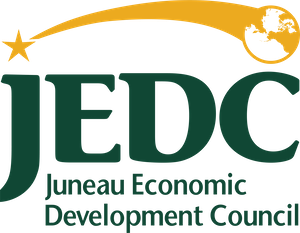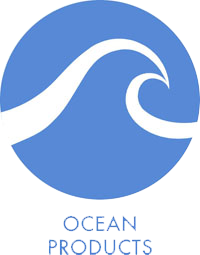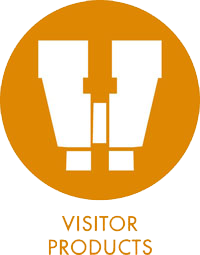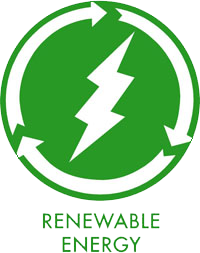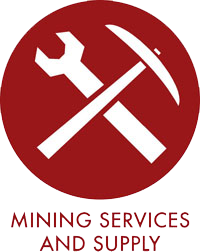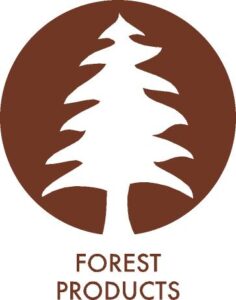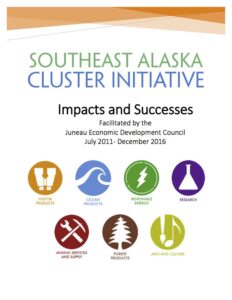Southeast Cluster Initiative

Focused on enhancing the competitiveness of businesses through facilitated Cluster Working Groups.
“The foundation of a regional economy is a group of clusters, not a collection of unrelated firms. Firms cluster together within a region because each firm benefits from being located near other similar or related firms. The firms in a cluster have common competitive strengths and needs.[1]”
Global Emergence of Cluster Based Economic Development
An “industry cluster” is a set of businesses, in the same or related field and located near one another, which are linked by service or supplier relationships, common customers and supporting institutions or other relationships. They share reliance on regional knowledge and on the regional labor market. They compete with one another but also complement one another. They draw productive advantage from their mutual proximity and connections. The presence of an industry cluster can have a positive impact on regional prosperity and can create more added value, offer more employment opportunities, and achieve higher levels of productivity. However, the existence of a cluster will in itself not strengthen the competitiveness of a region. Constructive collaboration rarely happens spontaneously. For that, there must be facilitated interaction among the participating companies and supporting entities. A cluster organization will enhance the ability of the industry to achieve higher economic performance. Cluster based economic development policy is now deployed world-wide through new organizations or institutions focused on collaboration and collective action that are neither government agencies nor private, for-profit firms.
The Development of the Southeast Alaska Cluster Initiative
Since early 2011, the Juneau Economic Development Council (JEDC) has led an industry cluster based approach to economic development in the Southeast Alaska region. Called the Southeast Alaska Cluster Initiative, this approach brings private sector “industry cluster” firms together with federal, state and local agencies, university faculty, trade association representatives, economic development organizations, community leaders and other stakeholders in facilitated Cluster Working Groups to address industry needs, concerns and opportunities on a cooperative basis. Since its inception, the Southeast Alaska Cluster Initiative has served as a successful catalyst for private-public partnerships.
In its initial phase, JEDC assembled and facilitated startup of four Cluster Working Groups in three established and one emerging industry sectors: a Visitor Products Cluster Working Group, Ocean Products Cluster Working Group, Forest Products Cluster Working Group, and Renewable Energy Cluster Working Group. These four Working Groups developed between 5 and 10 actionable initiatives unique to the needs and opportunities of each industry. A total of 15 meetings with over 200 individual participants were held during the cluster formation and initial initiative development phases.
Subsequently, JEDC facilitated the formation of a Cluster Working Group for Mining Services and Supply industry participants and the Research and Development sector. Each of these two Working Groups initially developed six action initiatives. Since 2014, JEDC also has been working toward the establishment of an Arts and Culture Cluster Working Group.
With the development of actionable initiatives, the focus of activity for all Working Groups transitioned to initiative implementation, leading to the creation of over 30 initiative implementation teams to follow through on action steps, each a team of stakeholders led by a volunteer Champion. Each Cluster Working Group met on a monthly basis to review progress on initiative implementation. Over time, some initiatives gained traction, saw activity and success, others became inactive, and new initiatives were undertaken. The Visitor Products Cluster Working Group, the Renewable Energy Cluster Working Group and the Research and Development Cluster Working Group continue to meet monthly with JEDC facilitation. Ultimately, the Mining Services and Supply Cluster Working Group and the Ocean Products Cluster Working Group did not survive as active working groups and activity stopped in 2014 and 2015, respectively.
Southeast Alaska Innovation Summit
In December 2011, JEDC convened the first Southeast Alaska Economic Summit which brought all Cluster Working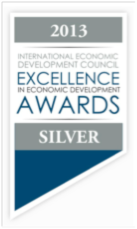 Groups active at that time together to advance the work of the clusters, share best practices and connect cluster participants with local community, government and business leaders. In 2013, JEDC worked to improve the cluster-specific business environment in Southeast Alaska by organizing a regional Innovation Summit early in the year to focus on the role of shared value in fostering industry innovation. “Shared value” is the achievement of economic success for business through products and/or services that also create value for society. This event brought together over 180 leaders in business, government and education to cultivate ideas and collaborate for economic success in the region. The two-day summit included an agenda packed with professional development and networking opportunities, as well as sessions focused on key industries and challenges specific to Southeast Alaska. JEDC’s well-attended Summit won a Silver level award for innovation from the International Economic Development Council in the special event category.
Groups active at that time together to advance the work of the clusters, share best practices and connect cluster participants with local community, government and business leaders. In 2013, JEDC worked to improve the cluster-specific business environment in Southeast Alaska by organizing a regional Innovation Summit early in the year to focus on the role of shared value in fostering industry innovation. “Shared value” is the achievement of economic success for business through products and/or services that also create value for society. This event brought together over 180 leaders in business, government and education to cultivate ideas and collaborate for economic success in the region. The two-day summit included an agenda packed with professional development and networking opportunities, as well as sessions focused on key industries and challenges specific to Southeast Alaska. JEDC’s well-attended Summit won a Silver level award for innovation from the International Economic Development Council in the special event category.
The event grew in attendance and impact with the January 2014 Innovation Summit. Keynote speakers included Thor Sigfussen from the Iceland Ocean Cluster, who spoke on the success of Economic Clusters in Iceland and how they have dramatically increased the value of cod by diversification and innovation; Mary Jo Waits, Director of the Economic and Workforce Development Division at the National Governors Association, talking about the role of Government in Innovation, sharing success stories from state governments around the nation; Patrice Kunesh, Deputy Undersecretary of Rural Development at USDA, speaking on innovators in government; and Jamie Bennett, Executive Director of ArtPlace America, speaking on creative placemaking.
At JEDC’s 2015 Innovation Summit, one key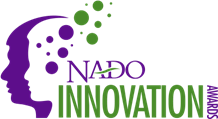 note speaker was Dr. Scott Stern, Chair of the Technological Innovation, Entrepreneurship, and Strategic Management Group at MIT Sloan School of Management. Dr. Stern’s research in the economics of innovation and entrepreneurship focuses on entrepreneurial strategy, innovation-driven entrepreneurial ecosystems, and innovation. The second keynote was Armelle Solelhac, representing the French Mountain Cluster, which for the past four years has been working to strengthen the mountain tourism (winter and summer) in the French Alps. Ms. Solelhac is founder of SWiTCH Consulting, an experiential marketing and digital communication agency specialized in tourism and outdoor sports. Third keynote was Mark Skinner, Vice President and Director of the Regional Innovation Acceleration Network (RIAN). RIAN strives to grow the impact of public, private and philanthropic investments in science, technology and innovation. This event was selected to receive a NADO (National Association of Development Organizations) Innovation Award for significant impact to the region through innovative program delivery.
note speaker was Dr. Scott Stern, Chair of the Technological Innovation, Entrepreneurship, and Strategic Management Group at MIT Sloan School of Management. Dr. Stern’s research in the economics of innovation and entrepreneurship focuses on entrepreneurial strategy, innovation-driven entrepreneurial ecosystems, and innovation. The second keynote was Armelle Solelhac, representing the French Mountain Cluster, which for the past four years has been working to strengthen the mountain tourism (winter and summer) in the French Alps. Ms. Solelhac is founder of SWiTCH Consulting, an experiential marketing and digital communication agency specialized in tourism and outdoor sports. Third keynote was Mark Skinner, Vice President and Director of the Regional Innovation Acceleration Network (RIAN). RIAN strives to grow the impact of public, private and philanthropic investments in science, technology and innovation. This event was selected to receive a NADO (National Association of Development Organizations) Innovation Award for significant impact to the region through innovative program delivery.
The February 2016 Innovation Summit highlighted leveraging innovation, investment and entrepreneurship to drive a competitive, creative economy. Keynote speaker Dr. Christian Ketels of the Harvard Business School discussed how Alaska can draw on the most recent thinking on the competitiveness of locations and the role of clusters to develop and implement an economic strategy applying cluster-based economic policies. Michael Shuman, globally recognized expert on community economics, discussed how innovative, self-financing enterprises can grow jobs and prosperity. Karen Pittman, President and CEO of the Forum for Youth Investment, discussed collective impact and how people from different sectors can come together to address complex issues.
“Regional industry clusters – synergistic regional concentrations of industry and related activity in particular fields – represents a powerful source of growth, new-firm starts, and quality jobs at a moment of economic uncertainty.[2]”
Examples of Impacts and Successes
An example of successful industry-government partnership resulting from the Southeast Cluster Initiative was the formation of a new industry led non-profit, The Working Forest Group, formed in June 2012 through cooperative agreements, to take over and continue the initiatives developed by the Forest Products Cluster Working Group. JEDC transitioned facilitation of group meetings at the request of this non-profit, led by Sealaska Timber.
Additional examples of initiatives actively championed by industry with the expectation that they will bring innovative ideas, tools or collaboration include a Visitor Products Working Group initiative to increase guided access to Forest Service land. This work brought a new appreciation to Forest Service management of the need for flexibility to respond to changing market needs in the region and innovative ideas for commercial activity where infrastructure constraints have limited commercial access. The Ocean Products Cluster Working Group supported innovation in industry and government collaboration in the development of a new industry around mariculture. In the Renewable Energy Cluster Working Group, participants have identified electric transportation a nascent industry with high development potential. The Electric Vehicle initiative has accelerated investment in infrastructure needed for bringing this innovative transportation alternative to the region. The biomass initiative contributed to local renewable resource utilization through diverse biomass infrastructure installments throughout Southeast Alaska. The Research and Development Cluster Working Group has successfully increased collaboration among Federal and State agencies, and the University of Alaska. The Working Group achieved formal designation of the region as a Community of Excellence in Research by the State Committee on Research.
One of the central tenets of the cluster-based model of economic development is that the most economically successful regions have managed to knit together companies, teaching and research institutions, and government at multiple levels to create uniquely competitive industries. The success of the Southeast Cluster Initiative has been the forging of new relationships and partnerships in our region between industry, government, the university and other agencies or non-profit entities, the increased understanding of economic development issues in our region, and the advancement of the priorities of our facilitated cluster working groups. Please click on a Cluster Working Group icon at the top of the page to read more about the industry impacts and successes of each of our Cluster Working Groups.
[1] Joseph Cortright, Making Sense of Clusters: Regional Competitiveness and Economic Development, The Brookings Institution, March 2006.
[2] Mark Muro and Kenan Fikri, Job Creation on a Budget: How Regional Industry Clusters Can Add Jobs, Bolster Entrepreneurship, and Spark Innovation. Brookings-Rockefeller, Project on State and Metropolitan Innovation, January 2011.
